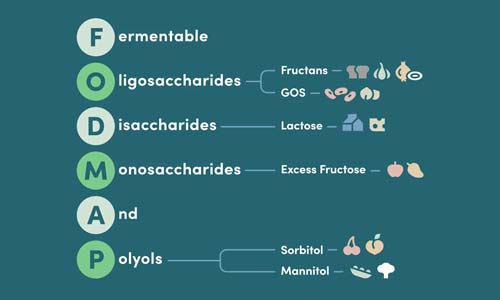Low FODMAP Fast Food Guide for Easy Digestion

Redefining Fast Food for Sensitive Guts
Picture this: You're rushing between meetings, the kids need dinner before soccer practice, and your stomach is already sending warning signals about the day ahead. For those of us navigating life with sensitive digestion, the golden arches and drive-thru windows that promise convenience often deliver something else entirely-discomfort, bloating, and the frustrating reminder that quick doesn't always mean gut-friendly.
Key Takeaways
- Fast food is often associated with convenience but can cause digestive discomfort for sensitive individuals.
- People with sensitive digestion frequently experience bloating and discomfort after eating typical fast food.
- Quick meals do not always equate to gut-friendly options for those managing digestive issues.
- Finding suitable fast food options is essential for maintaining comfort during busy days.
Table of Contents
- Redefining Fast Food for Sensitive Guts
- What Is the Low FODMAP Diet? A Science-Backed Approach to Eating Well Without Discomfort
- The Fast Food Dilemma: Why Eating Out Gets Tricky
- Fast Food FODMAPs 101: From Hidden Hazards to Savvy Swaps
- How to Identify Low FODMAP Fast Food Options: A Step-By-Step Guide for Confident Ordering
- The Big Chains, Broken Down: Low FODMAP Fast Food Guide
- Fast Food Menu Hacks: Modify Like a Pro
- Sips & Treats: Low FODMAP Beverages and Snacks
- Navigating with Confidence: Mastering Fast Food with a Low FODMAP Lifestyle
- Recovery & Next Steps: When High FODMAP Happens
- Resources & Next Bites: Your Continued Low FODMAP Journey
At Gourmend Foods, we believe you shouldn't have to choose between a busy lifestyle and digestive peace. Our mission centers on empowering you to enjoy vibrant, gourmet flavor wherever life takes you-even when that's the drive-thru lane at 6 PM on a Tuesday.
Here's what we've learned: Fast food on a low FODMAP diet isn't just possible-it's practical and delicious when you know what to look for. The secret lies in understanding which ingredients support easier digestion and which ones might leave you reaching for the antacids.
This comprehensive guide will transform how you approach convenient dining, turning those moments of dietary uncertainty into confident choices that honor both your schedule and your stomach.
What Is the Low FODMAP Diet? A Science-Backed Approach to Eating Well Without Discomfort

FODMAP stands for Fermentable Oligosaccharides, Disaccharides, Monosaccharides, and Polyols-a collection of short-chain carbohydrates that can be challenging for some digestive systems to process effectively. Think of them as the molecular troublemakers that ferment in your gut, potentially causing bloating, gas, and discomfort.
The Evolution of Low FODMAP Understanding
Developed by researchers at Monash University in Australia, the low FODMAP approach emerged from decades of studying how specific carbohydrates interact with our digestive systems. What started as clinical research has evolved into a practical eating framework that helps millions of people worldwide enjoy food without fear.
Why People Choose Low FODMAP:
- Managing IBS symptoms effectively
- Achieving easier, more comfortable digestion
- Reducing bloating and abdominal discomfort
- Regaining confidence in food choices
How It Works: The Science Made Simple
The low FODMAP approach works by temporarily removing or limiting specific carbohydrates that are poorly absorbed in the small intestine. When these compounds reach the large intestine undigested, they become food for gut bacteria, leading to fermentation-and potentially uncomfortable symptoms.
The key principle we embrace at Gourmend: This isn't about restriction-it's about abundance. Instead of focusing on what you can't eat, we celebrate the incredible variety of flavors and ingredients that support comfortable digestion. Our broths, for example, achieve rich, savory depth using chives, scallion greens, and leek tops rather than garlic bulbs, proving that limitation can spark culinary creativity.
Low FODMAP At-a-Glance
- Goal: Reduce fermentable carbohydrates that may cause digestive discomfort
- Approach: Temporary elimination followed by systematic reintroduction
- Philosophy: Focus on abundant, flavorful foods that support gut health
- Outcome: Personalized understanding of your digestive triggers and preferences
The Fast Food Dilemma: Why Eating Out Gets Tricky
Fast food restaurants face a unique challenge when it comes to low FODMAP dining: their greatest strength-consistency and efficiency-can become a hurdle for those with specific dietary needs. Every burger tastes the same because every sauce, seasoning blend, and preparation method follows precise formulas designed for mass production.
The Usual Suspects: High-FODMAP Ingredients in Fast Food
Walk into any quick-service kitchen, and you'll find the same flavor-building ingredients that have made fast food irresistible for decades. Unfortunately, many of these are exactly what those following a low FODMAP approach need to avoid:
Hidden High-FODMAP Sources
- Garlic and onion powder in seasoning blends
- High fructose corn syrup in sauces and condiments
- Wheat-based buns, breading, and thickeners
- Honey and certain artificial sweeteners
- Processed meat fillers and flavor enhancers
Where They Hide
- Marinades and meat seasonings
- Signature sauces and dressings
- Bread products and batter coatings
- Even seemingly "plain" items like french fries
- Beverage syrups and flavor additives
The Standardization Challenge
Fast food's commitment to consistency means that special requests can be complicated. When a restaurant pre-seasons their chicken with a blend containing garlic powder, asking them to "hold the garlic" isn't as simple as leaving off a slice of tomato. The seasoning is already integrated into the protein during preparation.
Expert Insight: This is why we developed our Gourmend broths with low FODMAP principles from the ground up. Instead of trying to remove problematic ingredients after the fact, we built flavor profiles using naturally gut-friendly alternatives like chive sprigs and leek greens.
The Reality Check: When Convenience Wins
Here's something we believe deeply: Life is dynamic, and sometimes convenience absolutely wins-and that's perfectly okay. Whether you're traveling, managing a family crisis, or simply having one of those days, there will be moments when fast food becomes the practical choice.
The goal isn't to achieve perfect adherence to any eating plan. Instead, it's about building the knowledge and confidence to make the best possible choices within whatever circumstances you're facing. Sometimes that means a carefully customized order at your local burger chain, and sometimes it means keeping a shelf-stable Gourmend broth carton in your car for those moments when you need something comforting and safe.
Remember: Progress over perfection. Every informed choice you make is a step toward better digestive health, even if it's not the "ideal" low FODMAP meal you might prepare at home.
Fast Food FODMAPs 101: From Hidden Hazards to Savvy Swaps
Understanding which ingredients to watch for-and which ones to embrace-transforms fast food from a digestive minefield into a landscape of manageable choices. Let's break down the key players you'll encounter in quick-service restaurants.
Common High-FODMAP Culprits in Fast Food
The most problematic ingredients for low FODMAP diners often hide in plain sight, disguised as flavor enhancers and preservatives that make fast food taste consistently delicious:
- Garlic and Onion Compounds
- Found in virtually every seasoning blend, sauce, and marinade. These appear as garlic powder, onion powder, natural flavoring, or even "spices" on ingredient lists.
- Wheat-Based Ingredients
- Beyond obvious sources like buns and breading, wheat appears as a thickener in sauces, a binding agent in processed meats, and even as a coating on french fries.
- High Fructose Corn Syrup
- The sweetener of choice for everything from ketchup to soft drinks, HFCS can trigger symptoms in those sensitive to excess fructose.
- Certain Dairy Products
- While not all dairy is high FODMAP, lactose-containing milk and ice cream can cause issues for those with lactose sensitivity.
Quick Answer: The biggest fast food FODMAP challenges are garlic/onion seasonings, wheat-based buns and coatings, high fructose corn syrup in sauces, and lactose in dairy products.
Low FODMAP Power Players
Fortunately, fast food restaurants also stock plenty of ingredients that align beautifully with low FODMAP principles. These become your building blocks for satisfying, gut-friendly meals:
- Plain Grilled Proteins: Unseasoned chicken breast, beef patties, eggs, and basic deli meats
- Fresh Vegetables: Lettuce, tomatoes, cucumbers, carrots, and bell peppers
- Simple Starches: Plain white rice, basic potato preparations, and corn tortillas
- Safe Fats: Olive oil, butter (if lactose isn't an issue), and certain cheese varieties in appropriate portions
- Basic Seasonings: Salt, pepper, herbs like basil and oregano
The art lies in combining these simple ingredients creatively. Think of it as deconstructed dining-taking apart the complex, heavily seasoned fast food experience and rebuilding it with clean, flavorful components.
For those times when you want to elevate your fast food experience, consider keeping a few Gourmend essentials in your bag or car. A small container of our seasoning blend can transform a plain grilled chicken breast into something genuinely exciting, while our shelf-stable broth cartons provide a warming, nourishing option when standard fast food feels too risky.
The key insight here is that low FODMAP fast food isn't about settling for bland, boring meals. It's about understanding which ingredients support your digestive health and then using creativity and high-quality flavor enhancers to build something delicious within those parameters.
How to Identify Low FODMAP Fast Food Options: A Step-By-Step Guide for Confident Ordering
Navigating fast food menus with digestive sensitivities doesn't have to feel like detective work. With the right preparation and questioning techniques, you can walk into any quick-service restaurant knowing exactly how to build a meal that satisfies both your hunger and your gut health needs.
Pre-Visit Prep: Research Before You Roll Up
The most successful low FODMAP fast food experiences begin before you leave home. Most major chains now provide detailed ingredient lists and allergen information online, giving you the power to plan your order in advance.
Essential Pre-Visit Steps
- Download chain apps: Many include detailed nutritional and ingredient breakdowns
- Check allergen charts: Look for gluten, dairy, and "contains onion/garlic" warnings
- Identify backup options: Have 2-3 menu items researched in case your first choice isn't available
- Screenshot safe options: Save ingredient lists on your phone for easy reference
We've found that Gourmend customers who spend just 5-10 minutes researching before heading out report significantly more confidence and satisfaction with their fast food experiences. Think of it as meal prep for dining out.
At the Restaurant: Mastering Drive-Thru Diplomacy
The key to successful ordering lies in asking specific, actionable questions rather than expecting staff to understand complex dietary requirements. Most fast food employees receive extensive training on allergens but may not be familiar with FODMAP terminology.
Effective Questions to Ask: "Does your grilled chicken have any seasoning or marinade?" "Are there onions mixed into the beef patties?" "Can I get that burger with just lettuce, tomato, and the plain meat patty?"
What works: Specific ingredient questions, simple customization requests, and patience with staff who may need to check with kitchen managers.
What doesn't work: Expecting detailed FODMAP knowledge, complex special preparations during rush hours, or assuming "gluten-free" automatically means "low FODMAP."
Pro Strategy: Keep a small container of Gourmend seasoning in your bag. Plain grilled proteins become infinitely more exciting with a sprinkle of our carefully crafted, gut-friendly blends.
Handling Cross-Contamination and Uncertain Additives
Fast food environments prioritize speed and efficiency, which means cross-contamination and shared preparation surfaces are realities you'll need to navigate based on your personal sensitivity levels.
For most people following a low FODMAP approach, trace amounts of problematic ingredients through cross-contamination won't trigger significant symptoms. However, if you have celiac disease or severe sensitivities, you'll need to weigh the risks more carefully.
Quick Answer: Assess your own sensitivity level and comfort with uncertainty. When in doubt, stick to the plainest possible preparations and supplement with your own safe seasonings and condiments.
Remember that the low FODMAP diet is about finding your personal threshold, not achieving perfection. A small amount of garlic powder in a seasoning blend might be perfectly manageable for you, while a honey-based sauce could be problematic. Learning these distinctions takes time and self-awareness.
The Big Chains, Broken Down: Low FODMAP Fast Food Guide

Each major fast food chain has its own personality when it comes to low FODMAP friendliness. Some excel at simple, customizable options, while others require more creative navigation. Here's your comprehensive guide to making the best choices at America's most popular quick-service restaurants.
Chain Strengths for Low FODMAP Dining
- Consistent ingredient lists across locations
- Detailed allergen information readily available
- Customization options for most menu items
- Plain protein options at nearly every chain
Common Chain Challenges
- Hidden seasonings in "plain" items
- Limited sauce and condiment alternatives
- Cross-contamination in shared fryers
- Portion size restrictions on safe ingredients
| Chain | Best Low FODMAP Options | Hidden FODMAP Risks | Customization Friendliness | Sauce/Condiment Safety | Overall FODMAP Rating |
|---|---|---|---|---|---|
| McDonald's | Egg McMuffin (no muffin), plain beef patties, side salads, scrambled eggs | Seasoned fries, all signature sauces, chicken marinades | High - willing to customize most items | Limited - bring your own condiments | ⭐⭐⭐⭐ |
| Chipotle | White rice, plain grilled chicken/steak, lettuce, tomatoes, cheese | All salsas contain garlic/onion, beans in large portions, guacamole portions | Excellent - build your own bowl concept | Poor - most sauces contain high FODMAPs | ⭐⭐⭐⭐⭐ |
| Chick-fil-A | Grilled chicken breast, fruit cups, side salads | Chicken marinades, breading, signature sauces | Good - accommodating with special requests | Limited - most sauces problematic | ⭐⭐⭐ |
| Subway | Gluten-free bread (check ingredients), turkey, lettuce, tomatoes, cucumbers | Most deli meats contain garlic, bread ingredients vary | Excellent - sandwich customization standard | Moderate - oil and vinegar available | ⭐⭐⭐⭐ |
| Taco Bell | Plain rice, seasoned beef (small portions), lettuce, tomatoes | Most proteins contain garlic/onion, beans, large portions | Good - power bowl options available | Poor - most sauces contain high FODMAPs | ⭐⭐ |
| Five Guys | Plain beef patties, lettuce wrap, basic toppings | Seasoned fries, most condiments, milkshakes | Excellent - "burger your way" philosophy | Limited - basic condiments only | ⭐⭐⭐⭐ |
| Verdict: Chipotle and Five Guys offer the most low FODMAP-friendly experiences due to their customization options and plain protein availability. McDonald's provides reliable basics, while Taco Bell requires the most careful navigation. | |||||
McDonald's: The Reliable Basics Champion
McDonald's earns high marks for low FODMAP dining because of their willingness to customize orders and their straightforward ingredient lists. The key is focusing on their simplest offerings and avoiding the complex signature items.
Your best bets: Order a Quarter Pounder with just the beef patty, lettuce, and tomato. Skip the bun or ask for it on the side. Their scrambled eggs are typically prepared plain, making them perfect for breakfast. Side salads provide fresh vegetables, though you'll want to bring your own dressing.
McDonald's Pro Tip: Their beef patties are seasoned only with salt and pepper, making them one of the safest protein options in fast food. However, avoid their seasoned fries, which contain natural beef flavoring that may include garlic compounds.
Chipotle: The Customization King
Chipotle's assembly-line approach makes it the gold standard for low FODMAP fast food. You can watch every ingredient being added and make real-time adjustments based on what looks safe.
Build your perfect bowl: Start with white rice (their safest base), add plain grilled chicken or steak, load up on lettuce and tomatoes, and add a moderate amount of cheese if you tolerate dairy. Skip all salsas, beans in large portions, and be cautious with guacamole portions.
The transparency at Chipotle means you can see exactly what's going into your meal, making it easier to stay within your comfort zone while still enjoying a satisfying, flavorful experience.
Chick-fil-A: Requires Careful Navigation
While Chick-fil-A's grilled chicken breast is naturally low FODMAP, many of their other offerings require careful consideration. Their signature sauces and breaded items contain ingredients that may trigger symptoms.
Safe approach: Order the grilled chicken breast plain, pair it with a fruit cup or side salad, and bring your own seasonings. Their customer service reputation means they're usually happy to accommodate special requests.
Sips & Treats: Low FODMAP Beverages and Snacks
Beverages and snacks at fast food restaurants can be surprisingly tricky territory for low FODMAP dining. What seems like a simple soft drink or side item often contains hidden high FODMAP ingredients that can derail an otherwise successful meal.
Safe Beverage Choices
The safest beverage approach at fast food restaurants is to stick with the basics. Water, black coffee, and plain tea are universally safe options that won't add any FODMAP load to your meal.
- Always safe: Water, black coffee, espresso, plain tea (hot or iced)
- Generally safe: Diet sodas with artificial sweeteners (check specific sweeteners if sensitive)
- Portion-dependent: Orange juice (small portions), lactose-free milk options
- Avoid: Apple juice, pear juice, smoothies with high FODMAP fruits, regular sodas with high fructose corn syrup
Sweetener Sensitivity: While artificial sweeteners in diet sodas are technically low FODMAP, some people with IBS find that large quantities of certain sugar alcohols can trigger symptoms. Pay attention to your individual response.
Many fast food locations now offer flavored waters and enhanced beverages. These can be excellent choices, but always check the ingredient list for honey, agave, or high fructose corn syrup-common additions that can turn a safe beverage into a FODMAP challenge.
Portable Snacks and Strategic Sides
Fast food snacks require the same careful attention as main dishes. The key is understanding which preparations are likely to be safe and which ones hide problematic ingredients in seasonings or processing.
Reliably safe options include plain rice cakes (if available), basic potato chips without seasoning, and simple fruit cups containing safe fruits like grapes or oranges. Many locations now offer apple slices, though you'll want to limit portions since apples become high FODMAP in larger servings.
Emergency Snack Strategy: Keep a small container of Gourmend seasoning and some plain crackers in your bag. This combination can turn any plain protein or simple side into a satisfying, flavorful snack that supports your digestive health.
Avoid flavored chips, seasoned nuts, and most packaged snacks available at fast food locations. These typically contain garlic powder, onion powder, or other high FODMAP seasonings that can trigger symptoms even in small amounts.
Recovery & Next Steps: When High FODMAP Happens
Even with the best preparation and intentions, accidental FODMAP consumption happens to everyone following this dietary approach. The key is understanding how to respond constructively rather than letting temporary discomfort derail your confidence or long-term success.
Understanding Your Body's Normal Response
When you accidentally consume high FODMAP ingredients, your body's response is typically temporary and manageable. Common symptoms include bloating, gas, abdominal discomfort, or changes in bowel habits-all normal reactions that indicate your digestive system is processing foods it finds challenging.
These symptoms usually peak within a few hours of consumption and resolve within 24-48 hours for most people. Understanding this timeline helps reduce anxiety and allows you to respond appropriately rather than overreacting to temporary discomfort.
Important Reminder: Accidental FODMAP consumption doesn't cause lasting damage to your digestive system. It's temporary discomfort, not a health crisis, and your body will return to baseline as the problematic foods move through your system.
Practical Recovery Strategies
When you realize you've consumed high FODMAP ingredients, gentle supportive measures can help minimize discomfort and speed recovery. The goal is supporting your body's natural processes rather than trying to counteract or "fix" the situation dramatically.
- Stay hydrated: Water helps with digestion and can reduce bloating sensations
- Gentle movement: Light walking can help with gas and digestive comfort
- Simple meals: Stick to easily digestible, low FODMAP foods for the next day or two
- Adequate rest: Stress can worsen digestive symptoms, so prioritize sleep and relaxation
Avoid the temptation to drastically restrict your eating or try unproven "detox" approaches. Your digestive system recovers best with gentle, consistent support rather than extreme measures that can actually increase stress on your system.
Learning Opportunity: Each accidental exposure provides valuable information about your personal tolerances and triggers. Keep a
Frequently Asked Questions
Is anything from McDonald's low FODMAP?
Most menu items at typical fast food chains use high FODMAP ingredients like onion and garlic, so options are very limited. However, you can look for simple grilled proteins without sauces, and request to hold any onions or garlic-containing condiments. Pairing these with plain lettuce and tomato can help keep the meal low FODMAP, but cross-contamination and hidden ingredients mean caution is key.
What fast food is ok with IBS?
Fast food options that work best with IBS tend to be those with simple, whole ingredients and no onion or garlic. Grilled chicken or fish, plain rice or potato sides, and fresh salad greens without dressing are safer bets. Always ask about ingredients and avoid sauces or seasonings that often contain high FODMAPs. Bringing your own low FODMAP seasonings or choosing items with clear ingredient transparency helps maintain digestive comfort.
Can I eat Subway if I have IBS?
Subway offers customizable sandwiches, which is a plus for managing IBS, but many breads, sauces, and toppings contain high FODMAP ingredients like onion and garlic. Choosing a gluten-free bread option and loading up on low FODMAP veggies like lettuce, cucumber, and tomatoes can work. Skip sauces and opt for simple olive oil and vinegar dressings to reduce FODMAP content and ease digestion.
What is the best low FODMAP food for restaurants?
The best low FODMAP choices at restaurants are dishes with straightforward ingredients-think grilled proteins, steamed vegetables, and plain starches like rice or potatoes. Avoid sauces and dressings unless you can confirm they're free from onion, garlic, and other high FODMAPs. When in doubt, ask for modifications or bring your own low FODMAP broths and seasonings from Gourmend to elevate flavor safely.
Is anything at Taco Bell low in FODMAP?
Taco Bell’s menu often features high FODMAP ingredients like onions, garlic, and beans in large portions, making it challenging. Some items can be adjusted by requesting no onions, no sauces, and choosing hard-shell tacos with plain protein and lettuce. Portion control is important, especially with ingredients like beans, which are only low FODMAP in very small amounts. Careful customization is essential to enjoy Taco Bell without digestive discomfort.
What is low FODMAP at Starbucks?
Starbucks offers a few low FODMAP options if you choose carefully. Plain brewed coffee or espresso with lactose-free or plant-based milk like almond milk can work. For food, items like plain bagels without onion or garlic, or a simple fruit cup, are safer choices. Avoid syrups and sauces that often contain high FODMAP ingredients, and opt for water or herbal teas to stay gentle on digestion.





